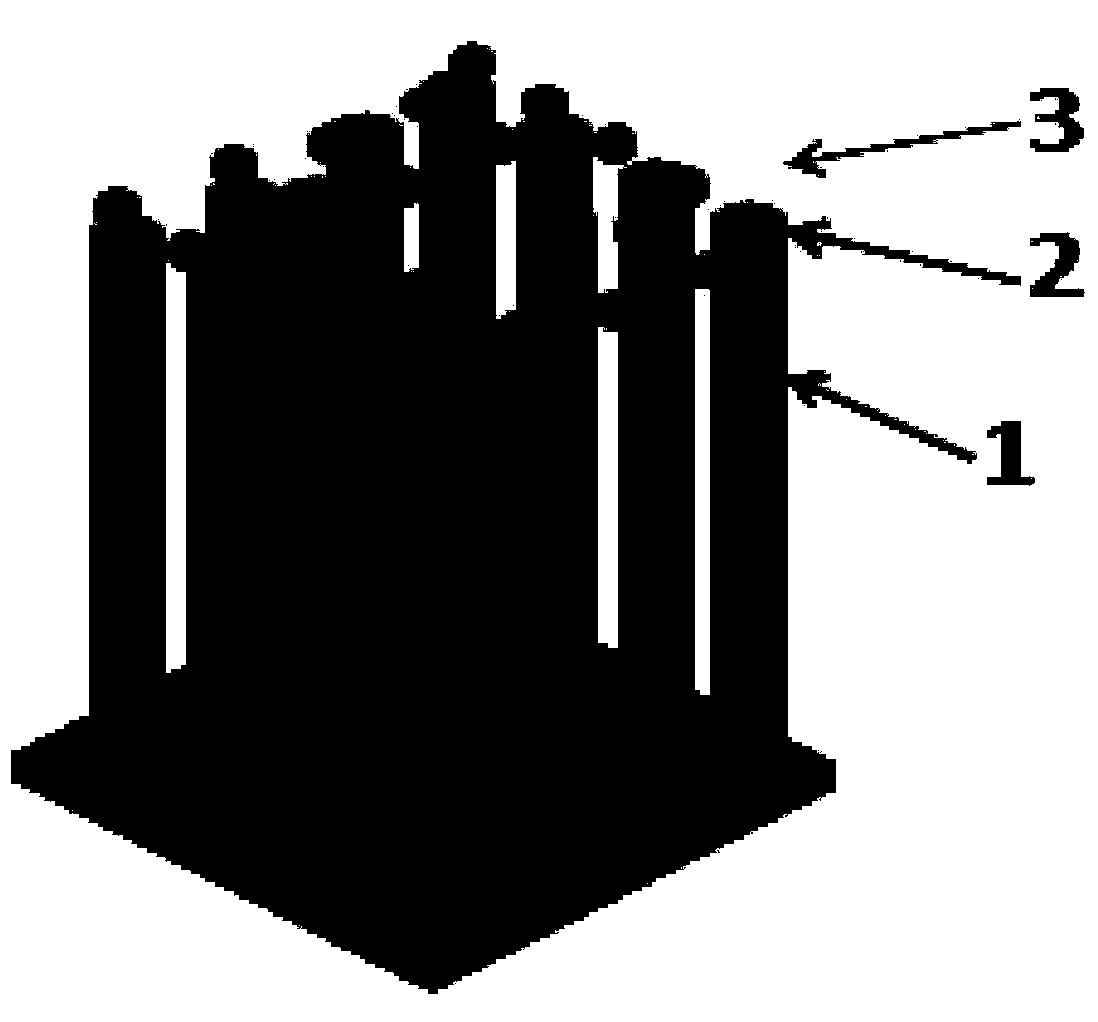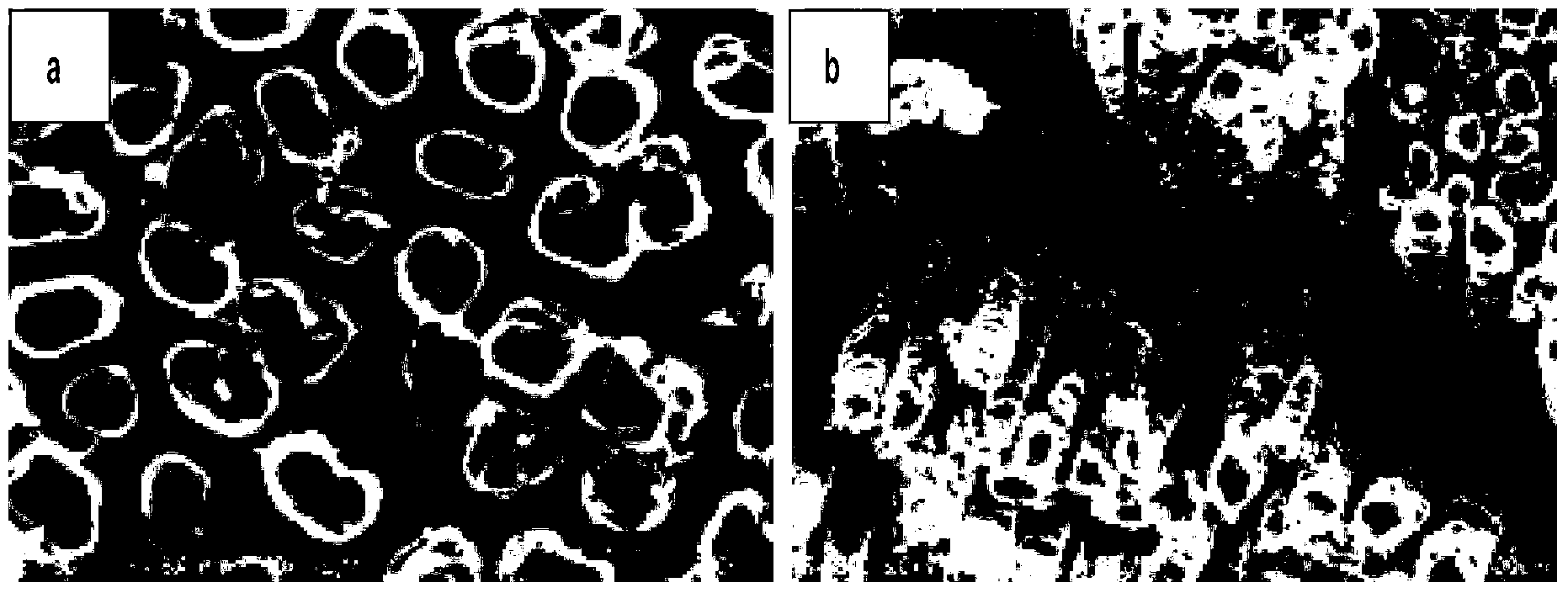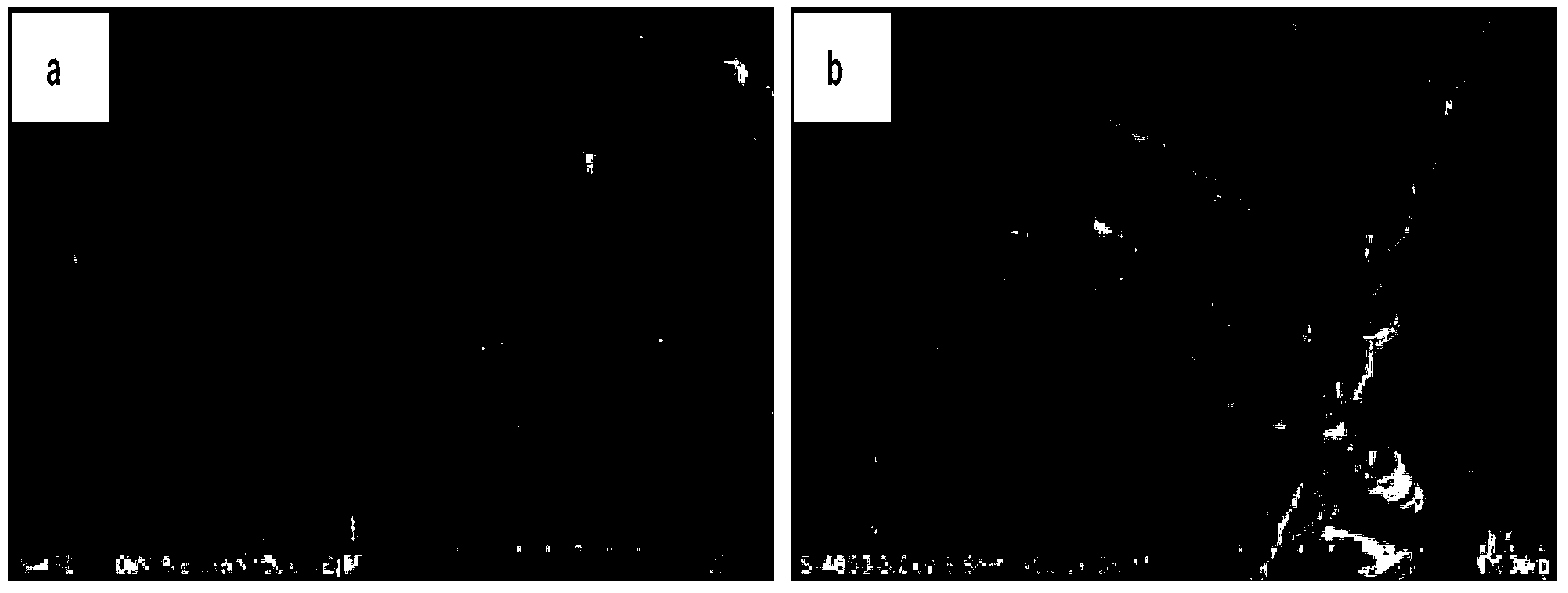Graphene oxide-silver nanoparticle-titanium dioxide nanotube array material as well as preparation method and application of graphene oxide-silver nanoparticle-titanium dioxide nanotube array material
A nanotube array, silver nanoparticle technology, applied in material excitation analysis, Raman scattering and other directions, can solve the problems of increased surface-enhanced Raman scattering detection cost, pollution, disposable use, etc., achieve good photocatalytic activity, realize Self-cleaning and improved sensitivity
- Summary
- Abstract
- Description
- Claims
- Application Information
AI Technical Summary
Problems solved by technology
Method used
Image
Examples
Embodiment 1
[0033] (1) Preparation of titania nanotube array material: the titanium sheet was ultrasonically cleaned in ethanol, acetone, and deionized water for 30 minutes, and then polished in a mixed solution of hydrogen fluoride, nitric acid, and water with a volume ratio of 1:4:5; In the two-electrode electrochemical reaction system, the titanium sheet is used as the anode, and the platinum sheet is used as the cathode. The molar concentration is 0.2mol / L ammonium fluoride, the molar concentration is 0.5mol / L phosphoric acid, the volume percentage concentration is 5% glycerol and the volume percentage A mixed aqueous solution with a concentration of 40% ethylene glycol was used as the reaction electrolyte solution, and the anodic oxidation method was used to react at a constant temperature of 25°C for 2 hours under the condition of a constant voltage of 30V, and then fully rinsed with deionized water and dried naturally to obtain an amorphous form Titanium dioxide nanotube arrays of t...
Embodiment 2
[0049](1) Preparation of titania nanotube array material: the titanium sheet was ultrasonically cleaned in ethanol, acetone, and deionized water for 30 minutes, and then polished in hydrogen fluoride / nitric acid / water solution with a volume ratio of 1:4:5; In the electrochemical reaction system, the titanium sheet is used as the anode, and the platinum sheet is used as the cathode. The molar concentration is 0.15mol / L ammonium fluoride, the molar concentration is 0.4mol / L phosphoric acid, the volume percentage concentration is 6% glycerol and the volume percentage concentration is A mixed aqueous solution of 35% ethylene glycol was used as the reaction electrolyte solution, and the anodic oxidation method was used to react at a constant temperature of 25°C for 3 hours under the condition of a constant voltage of 30V, and then fully rinsed with deionized water and dried naturally to obtain amorphous titanium dioxide. array of nanotubes. The amorphous titania nanotube array was ...
Embodiment 3
[0054] (1) Preparation of titania nanotube array material: the titanium sheet was ultrasonically cleaned in ethanol, acetone, and deionized water for 30 minutes, and then polished in hydrogen fluoride / nitric acid / water solution with a volume ratio of 1:4:5; In the electrochemical reaction system, the titanium sheet is used as the anode, and the platinum sheet is used as the cathode. The molar concentration is 0.3mol / L ammonium fluoride, the molar concentration is 0.50mol / L phosphoric acid, the volume percentage concentration is 7% glycerol and the volume percentage concentration is A mixed aqueous solution of 45% ethylene glycol was used as the reaction electrolyte solution, and the anodic oxidation method was used to react at a constant temperature of 25°C for 3 hours under the condition of a constant voltage of 20V, and then fully rinsed with deionized water and dried naturally to obtain amorphous titanium dioxide. array of nanotubes. The amorphous titania nanotube array was...
PUM
| Property | Measurement | Unit |
|---|---|---|
| thickness | aaaaa | aaaaa |
| length | aaaaa | aaaaa |
| diameter | aaaaa | aaaaa |
Abstract
Description
Claims
Application Information
 Login to View More
Login to View More - R&D
- Intellectual Property
- Life Sciences
- Materials
- Tech Scout
- Unparalleled Data Quality
- Higher Quality Content
- 60% Fewer Hallucinations
Browse by: Latest US Patents, China's latest patents, Technical Efficacy Thesaurus, Application Domain, Technology Topic, Popular Technical Reports.
© 2025 PatSnap. All rights reserved.Legal|Privacy policy|Modern Slavery Act Transparency Statement|Sitemap|About US| Contact US: help@patsnap.com



